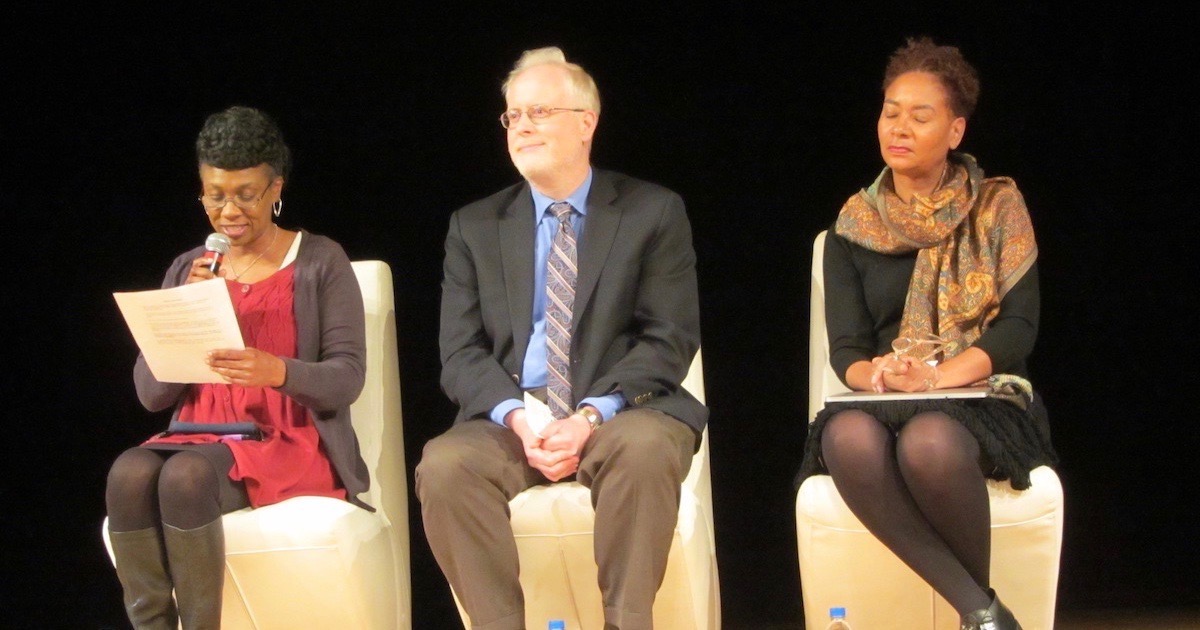 Bioethics
Bioethics
 Evolution
Evolution
Documentary Human Zoos Is Screened at Detroit’s African-American History Museum

Editor’s note: Recently, Scientific American viciously smeared all critics of Darwinian theory with an article titled, “Denial of Evolution Is a Form of White Supremacy,” by Allison Hopper. As promised, we are presenting some of our extensive past coverage of the tight links between racism and evolution. This article was originally published on November 30, 2018.
A few weeks ago, the Discovery Institute-produced documentary Human Zoos was screened before an engaged audience at the Charles H. Wright Museum in Detroit. The world’s largest museum devoted to African-American history, the Wright Museum is especially noted for its exhibition, And Still We Rise, which traces the African-American experience from its roots in Africa to its history in contemporary America through a series of immersive displays. Visitors journey through time as they walk through an African village, a slave fort and slave ship, the streets of Detroit in the early 20th century, and much more.
Human Zoos was shown in the Wright Museum’s General Motors Theater. The film tells how thousands of indigenous peoples were put on public display in America in what scholars today call “human zoos.” One African man, Ota Benga, was actually displayed at the Bronx Zoo in New York City in a cage in its Monkey House.
Humans as “Missing Links”
These displays were often intended to portray non-whites as lower on the evolutionary scale than whites and as “missing links” between humans and apes.
Human Zoos also explores the history of eugenics, the crusade by scientists and others to eliminate people considered evolutionarily unfit and to breed a “master race” based on the principles of Darwinian biology. Many of those targeted for forced sterilization by eugenicists were African-Americans or Hispanics.

About 150 people attended the Wright Museum’s screening of Human Zoos, and the question and answer period went on for more than an hour — until after the Museum’s closing. Museum educator Angela King moderated the discussion, which featured Discovery Institute Senior Fellow John West (who wrote and directed Human Zoos) and African-American Studies professor Valerie Sweeney Prince of Wayne State University. Prince is a literary scholar who has explored the tragic story of Saartjie Baartman, an African woman put on public display in Europe in the early 1800s and examined by pre-Darwinian scientists as a supposed link between humans and animals.
Audible Gasps from the Audience
During the discussion, one audience member asked whether efforts by Planned Parenthood to target the African-American community for birth control were any different from the campaign by eugenicists to reduce the population from races they considered lower on the evolutionary scale. West responded that there was actually a direct historical connection between eugenics and the founder of Planned Parenthood, Margaret Sanger, who was a virulent racist and Social Darwinist.
West said later that during the screening “there were audible gasps during parts of the film, and during the discussion afterward several members of the audience shared their own stories about how they had been personally impacted by scientific racism. They also expressed gratitude for how the film exposed the truth about what had happened to Ota Benga and others.”
“As a filmmaker, it was humbling to listen to the reactions and to learn more about how the issues raised by the film continue to plague us,” said West. He added that it was an honor to have his film presented at the world’s largest African-American history museum, noting that he had first visited the Charles Wright Museum in 2010 to participate in a debate on the connection between Charles Darwin and scientific racism.
“At the time, I was deeply moved by the Museum’s world-class exhibit And Still We Rise, and I vowed to someday bring my whole family to view it. Fortunately, my wife and children (now in their late teens!) were able to come with me to the showing, and so they were finally able to see the Museum.”


